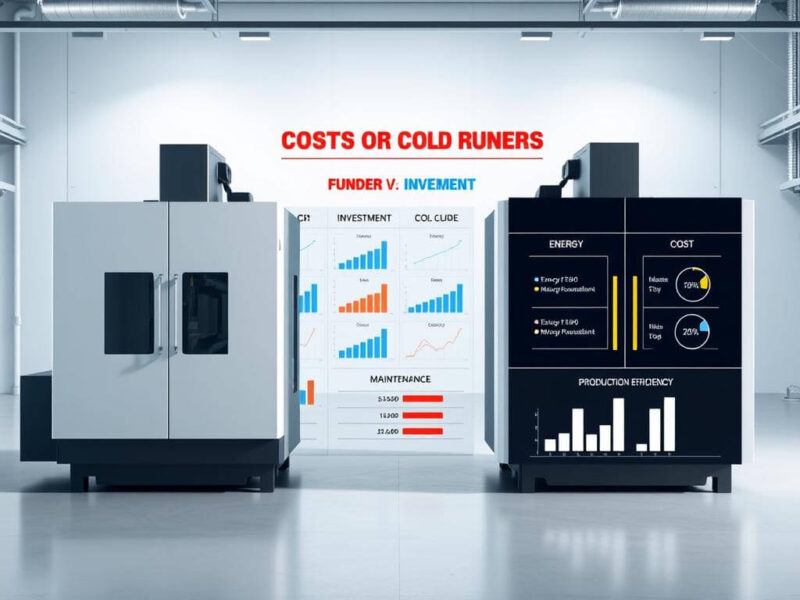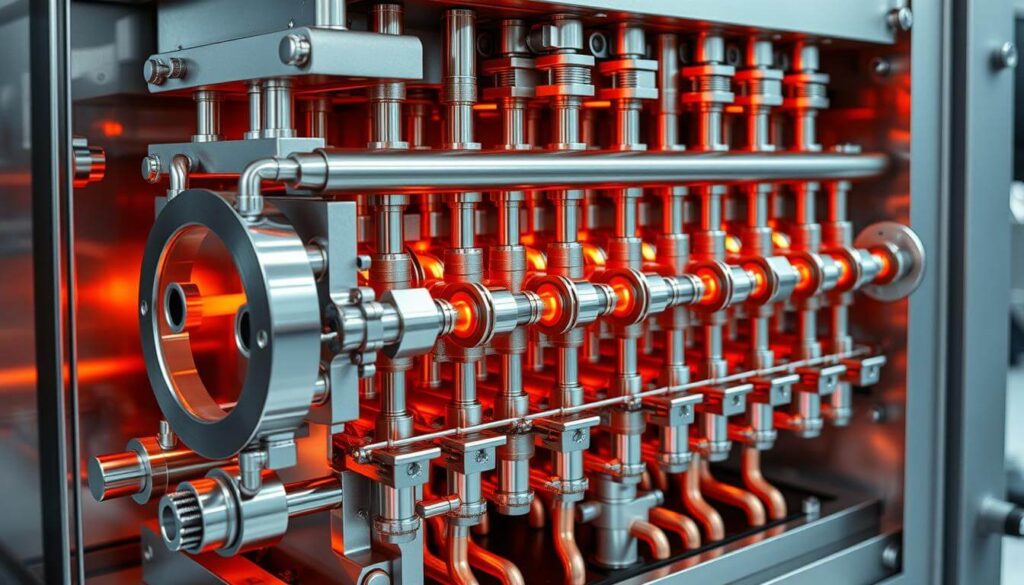
In the injection molding process, the choice of runner system plays a crucial role in production efficiency, product quality, and cost control. Hot runners and cold runners are two common systems, each with distinct characteristics and applications. This article will detail their differences, advantages, disadvantages, and how to choose the right system.
What is a Hot Runner?
A hot runner system is a runner system that uses heating elements to keep the plastic in a molten state. It consists of heated nozzles, a manifold, and a temperature control system, ensuring continuous plastic flow during injection molding.
Advantages of Hot Runners:
- Reduced Material Waste: No solidified runner waste, significantly reducing material loss.
- Shorter Cycle Times: No need to wait for runner cooling, improving production efficiency.
- Improved Product Quality: More uniform filling, enhancing consistency and surface quality.
- Supports Multi-Cavity Molds: Suitable for large-scale production, boosting productivity.
Disadvantages of Hot Runners:
- Higher Initial Cost: Requires additional heating components and a temperature control system, increasing cost.
- Complex Maintenance: Heating elements wear over time, leading to higher maintenance costs.
- Strict Temperature Control Requirements: Uneven temperatures may cause material degradation or inconsistent flow.
What is a Cold Runner?
A cold runner system is a runner system without heating elements, where plastic cools and solidifies along with the molded part, requiring secondary processing or recycling.
Advantages of Cold Runners:
- Lower Mold Cost: Structurally simpler, no additional heating or control system required.
- Easier Maintenance: No heating components, reducing maintenance costs.
- Compatible with Various Materials: Suitable for almost all thermoplastic materials.
Disadvantages of Cold Runners:
- More Material Waste: Each cycle produces solidified runner scrap unless a recycling system is used.
- Lower Production Efficiency: Requires additional cooling time, extending cycle time.
- Limited Dimensional Precision: Material shrinkage during cooling may affect accuracy.
Comparison: Hot Runners vs. Cold Runners
| Feature | Hot Runner | Cold Runner |
|---|---|---|
| Material Waste | Low | High |
| Production Efficiency | High | Low |
| Equipment Cost | High | Low |
| Maintenance Difficulty | High | Low |
| Suitable Product Types | Mass Production | Small Batch or Multi-Material Molding |
How to Choose the Right Runner System?
The choice between hot runners and cold runners depends on several factors, including production volume, budget, material characteristics, and product precision requirements.
- Hot Runners are suitable for:
- High-efficiency production with reduced cycle times.
- Products requiring high surface quality and dimensional accuracy.
- Large-scale production where mold costs can be justified.
- Cold Runners are suitable for:
- Low-volume production with limited mold budgets.
- Applications requiring diverse materials without the risk of thermal degradation.
- Simple maintenance needs, suitable for frequent mold changes
To optimize your injection molding process, consider these factors. Make a choice that fits your Production Needs. This ensures your system, whether Hot Runner or Cold Runner, meets your needs. Choosing the Right System is crucial for success in production.
What is the Combination of Hot Runner and Cold Runner?
The combination of hot and cold runners provides manufacturers with the advantages of both systems. Hot runners ensure precise material flow and minimize waste, while cold runners offer cost-effective simplicity. This hybrid approach improves production efficiency and reduces material costs, particularly for multi-cavity molds. It is widely used in industries such as automotive, electronics, and medical devices.
Principles of the Hybrid System
Integrating hot and cold runner systems in injection molding is an innovative approach that optimizes production efficiency. Typically, the hot runner system is used for the primary flow channels, ensuring consistent melt delivery, while the cold runner system is applied to secondary channels to manage solidification. This combination allows for better control over plastic flow characteristics while maintaining cost efficiency.
Conclusion:Partnering with Expert Mold Makers
Both hot runner and cold runner systems have their advantages and disadvantages. Companies should choose the appropriate system based on their specific production needs. For efficient, low-waste mass production, hot runners are the ideal choice, while cold runners remain a practical solution for low-cost, small-batch production.
At Xinlong Precision Mould Injection Molding Company, our team is dedicated to your needs. We work with you to find the best injection molding solution. This could be a hot runner or cold runner system. If you are looking for professional injection molding solutions, visit XLD Mould (xld-mould.com) to learn more!


The injection molding process is complex and creates plastic products. Dark spots are a common issue that affects these products